**Note: this piece is about knitting but all/most of the information can be applied to crocheting too! I am not as experienced at crochet but I have dabbled in freehand and the guidelines are pretty much the same
Intuitive knitting is a term a friend of mine (shoutout to Karen) told me about when she first taught me how to freehand knit a sweater. It was March 2020, and my friend Gracie and I had been wanting to take up knitting again and finally learn how to make a sweater. We had been following the stay-at-home order for two days when we had our first Zoom lesson on how to make a sweater without a pattern.
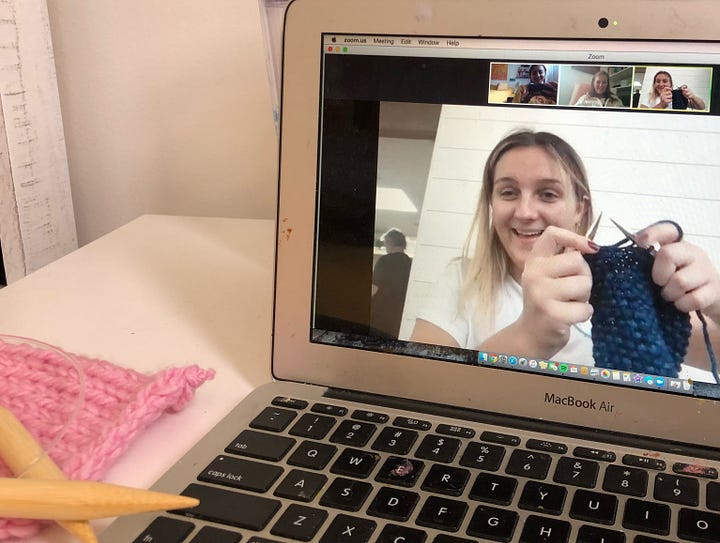

Currently, I actually only freehand knit (meaning I don’t use any patterns). I don’t use patterns because a) they intimidate me, b) I am lazy c) I have begun to enjoy the challenge of knitting intuitively and d) part of me really likes the feeling that I am making something 100% unique. Working without a pattern feels like an exciting adventure; you have an idea of what you want it to look like but there is really no guarantee what the outcome will be. It’s a journey- problems arise on the way and it’s part of the process to figure them out as you go!
I get a lot of questions about freehand knitting so I thought I would accumulate all of my thoughts and tips in one spot to be as helpful as I can.
Tip 1: Knit a swatch
In my opinion, in intuitive knitting, you must knit a swatch. A swatch is basically a little square of knitting (somewhere around 10-15 stitches) to help you figure out your tension. Your tension is how tightly or loosely you knit. It comes from what size yarn and needle you’re using as well as your personal style. For example, if you use thin yarn on big needles, your tension will be very loose (good for flowy tops and dresses!). The same goes with the opposite: thick yarn and small needles will make be stiff (good for potholders, baskets, or bags!). Your tension is also personal; some people just knit much tighter/looser than others. From your swatch, you can see how many stitches you make per inch. This will help you when deciding how many stitches to cast on.
Tip 2: Finding a sample piece to base your knitting off of
I learned how to determine general size by basing measurements off of an existing sweater I owned that I liked. Your sample should be a knit sweater (not a hoodie or crewneck). As you knit, you can hold your work up to your sample piece to adjust and see how you’re doing.
Tip 3: Choose a Simple project to begin
Due to how time-consuming this hobby is, it’s better, in the long run, to start with something simple (I recommend a top, a vest, or a simple raglan pullover). I make a lot of mistakes when I knit. In the past, I have had wild and intricate ideas for pieces and will buy all the yarn, and spend hours working on it, only to try it on and have it fit terribly or not at all.
I also recommend using a less expensive yarn. I have used these options from Michaels / JoAnns and liked them! In my opinion, this just lowers the pressure. Sometimes when it’s your first time trying a knitting technique and you’re using a fancy yarn, it can be *extra disappointing when you mess up or knit something unusable.
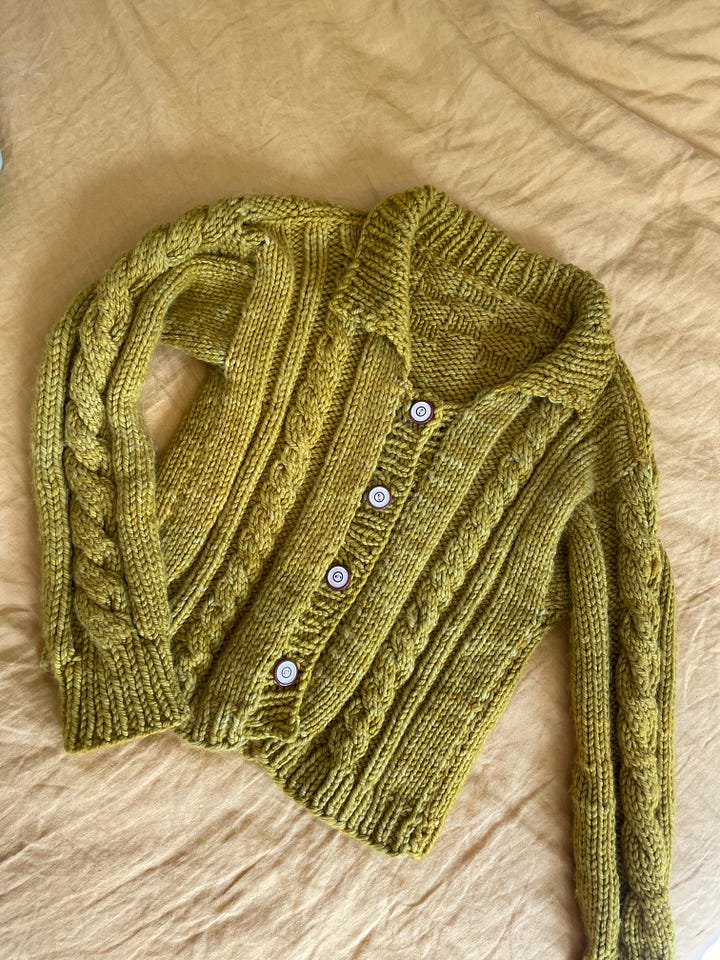

Tip 4: Don’t worry about making mistakes!
Unless you’re an expert (and maybe even if you are an expert) you might make a mistake. Maybe you’ll drop a few stitches or perhaps even make the neck hole too small for your head (something I have done a LOT). Intuitive knitting is all about letting go, having fun, and experimenting. It’s like a knitting brain workout. You’re problem-solving, you’re coming up with new solutions, you’re panicking and texting your friend at 11 pm with a video asking how to fix what you messed up… you know. It’s all part of the process! The sooner you accept your imperfections, the more fun you’ll have. And don’t forget imperfections are all subjective (I used to sew buttons over the holes in my hat when there’d be a mistake).
OK- now onto making that freestyle piece.
Your knitting swatch will tell you how many stitches per inch you knit. Make sure you knit your swatch in the stitch you’re going to be using for your project (for example: if you plan to knit in stockinette, knit your swatch in stockinette).
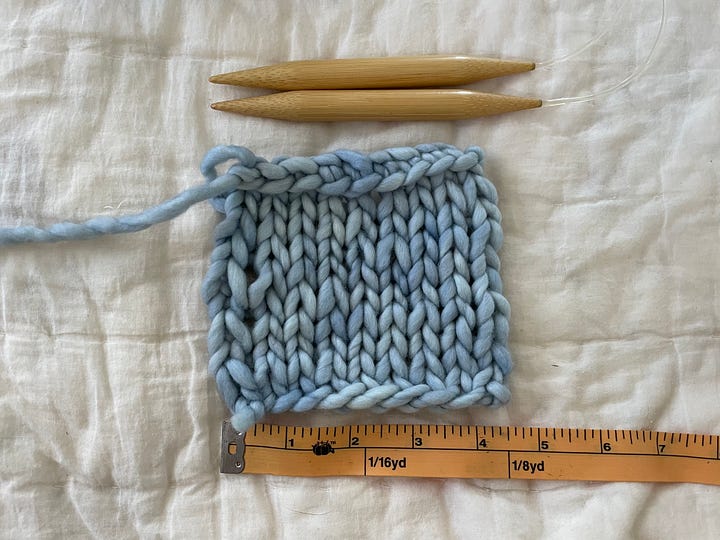
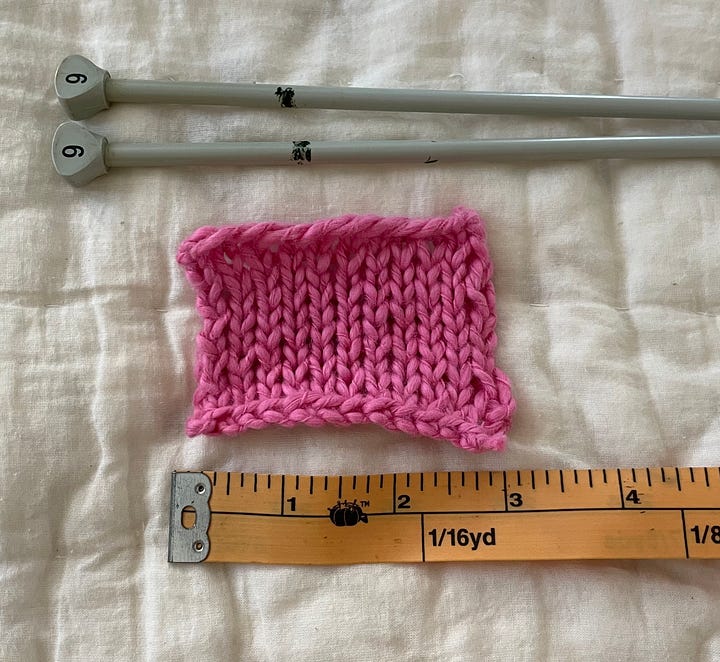
On this blue swatch, I used size US 17 needles and this Malabrigo Rasta yarn (one of my favorite extra bulky yarns!). I cast on 10 stitches and knit up 10 rows. I’ve got about 3 stitches per inch.
On this pink swatch, I used size US 9 needles and old scrap pink yarn (this yarn is a similar weight). I cast on 10 stitches and knit up 10 rows. I’ve got around 4 stitches per inch.
Next, lay your sample piece flat and take measurements. Keeping it flat will help you get accurate measurements.
I find that it’s easiest to break your sample piece into shapes. For example, a raglan sweater is basically a square for the back, a square for the front (with a little neckline), and two tubes for sleeves.

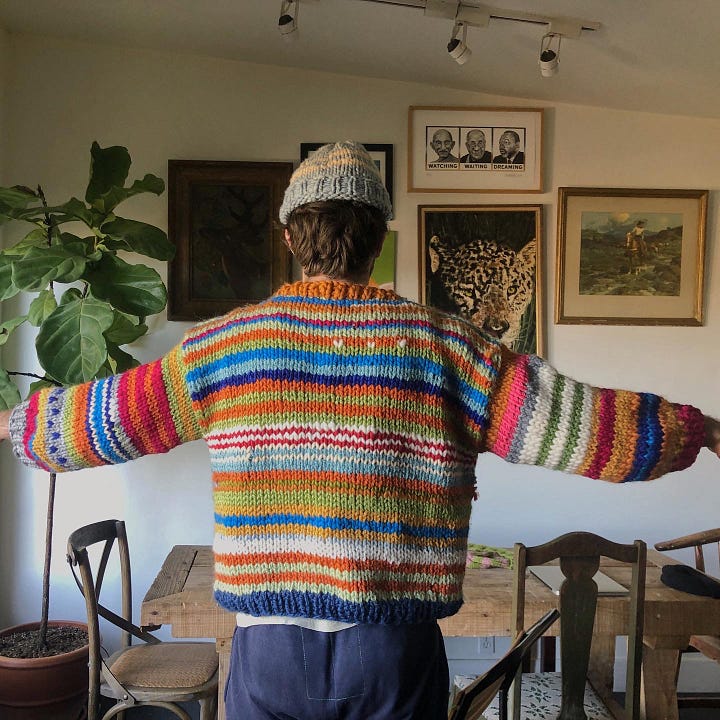


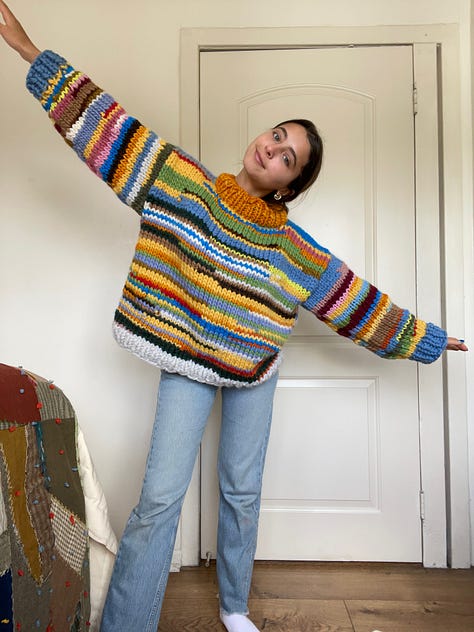
To figure out how many stitches to cast on, simply take the measurement of your sample piece and multiply it by the number you got from your swatch. For example, if the back of your sweater is 20 inches and you knit 2 stitches per inch, you should cast on 40 stitches for the back.
As you knit, you can hold your knitting up to your sample piece and adjust as you go. For a raglan sweater (pictured above) you knit: 1 square for the front, 1 square for the back and 2 tubes for the sleeve. You can knit them separately and seam them together before picking up stitches for the neck. OR you can knit the body in the round and pick up stitches for the sleeves… there are many different routes to the same destination.
Now it’s time to start- the rest is experimenting! When you have questions, I recommend asking some of your fiber artist friends, scrolling youtube, or asking around social media for tips. Otherwise, go ahead and try!! Take a risk! And don’t forget to go easy on yourself if you make a mistake- that is part of the fun!
Till next time!
xx
Kayla




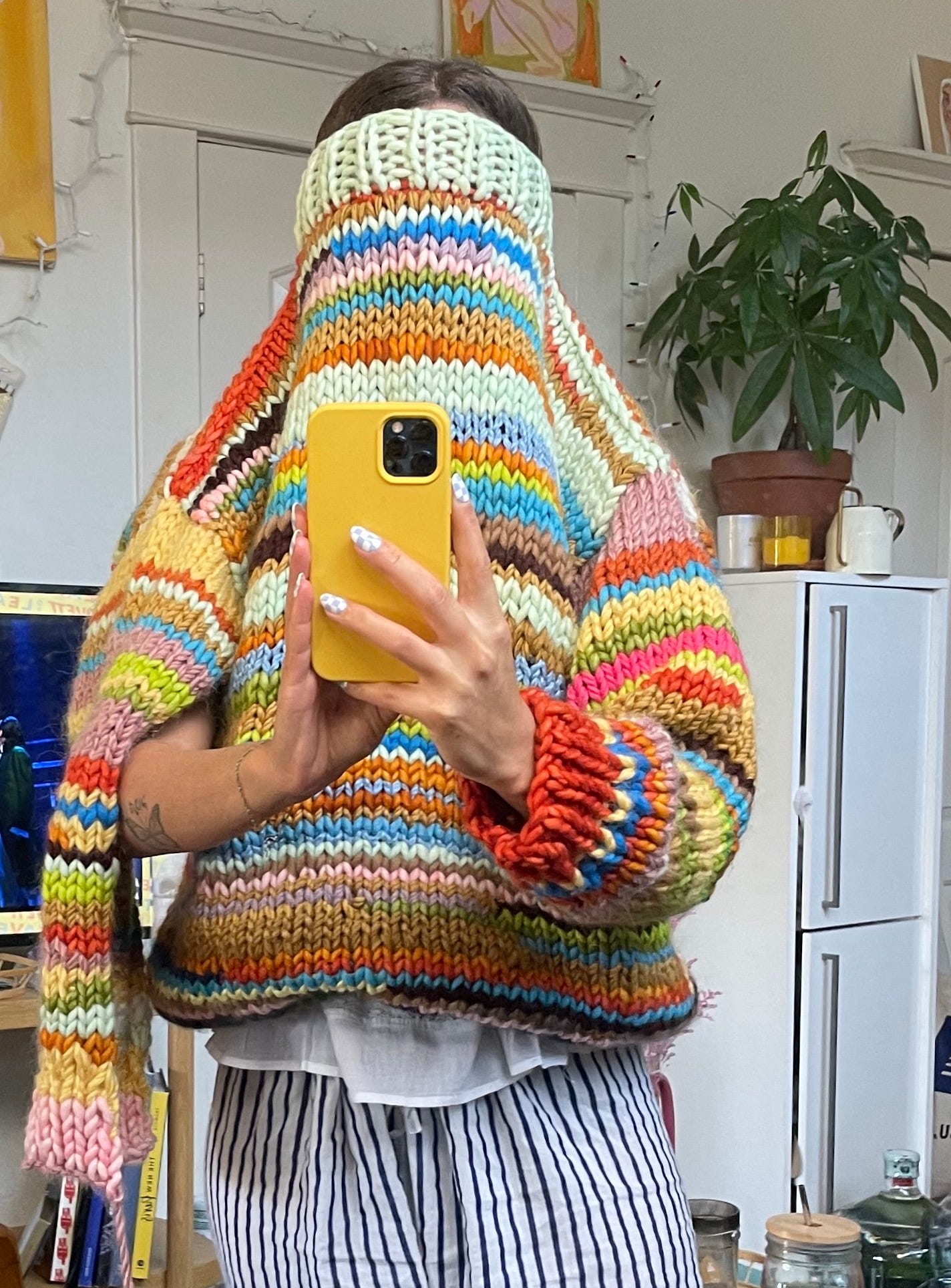
I really appreciated this !
Your intuitive approach to knitting is inspiring! I loved reading about your journey, and I've shared your post in this week's issue of What To Knit Next because it truly captures the spirit of adventure in knitting. Which project has been your favorite to freehand so far?